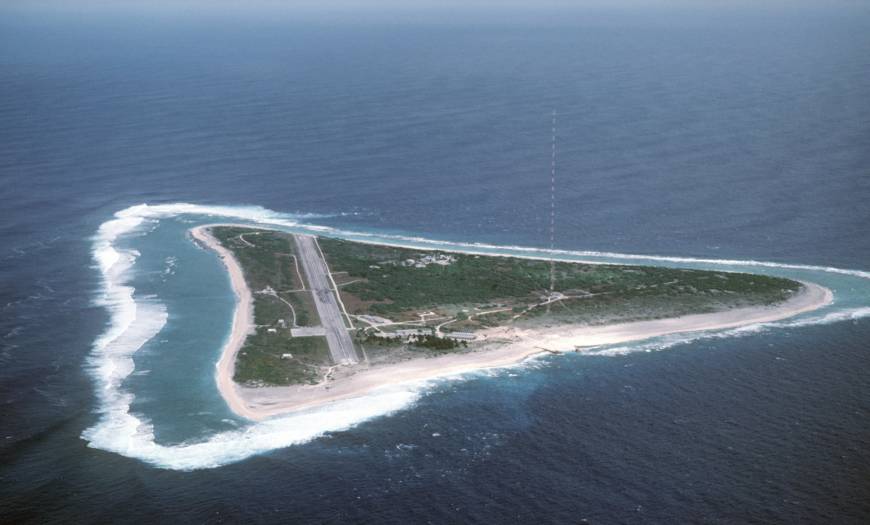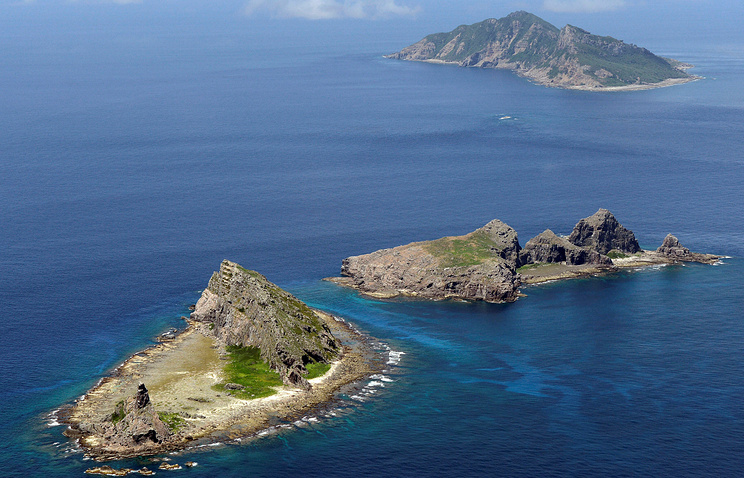The Japanese have estimated the deposits of rare earth elements in ocean sludge near the island of Minamitori at 16 million tons

Minitori Island with a US Coast Guard base. Photo: US Navy
Rare-earth elements (REE) are critical materials for many advanced technologies due to their unique physicochemical properties. They are used in promising areas of industry, including hybrid vehicles, rechargeable batteries, wind turbines, LEDs, compact fluorescent lamps, display panels, as well as in many medical and military technologies. The demand for REE, especially in renewable energy and electronics technologies, has led to an increase in demand for them in recent years.
Against this background, in 2011, the discovery of I. Kato was published, which found a high concentration of REE in ocean silt at the bottom of the Pacific Ocean. According to Kato, the concentration of elements there reaches 2230 ppm. In 2013, during the research expedition on flight KR13-02 of the Japanese Agency for Marine Science and Technology, rich deposits of rare earth elements in silt near Minimitori Island (in the photo) with a concentration of 2000-5000 ppm were confirmed.
')
Extraction of REE from silt has a number of advantages, Japanese researchers emphasize. Firstly, there is a particularly high concentration of heavy REE (from europium to lutetium). Secondly, there are practically no radioactive elements (uranium and thorium). Thirdly, silt is very easy to mine and process. And most importantly, the sludge resources in the ocean are almost endless .
Now, Japanese researchers have collected all the available data and have compiled a more complete map of REE deposits in ocean silt near Minimitori Island. After the KR13-02, MR13-E02 and KR14-02 research expeditions, three more expeditions, MR14-E02, MR15-E01 Leg 2 and MR15-02, were sent to the specified area for coring to refine the previously collected data and obtain new information.

Maps and bathymetric maps of the study area. The asterisks indicate the core sampling points by the piston tube, and the research flights are marked in color, as indicated in the legend. The white rectangle on the detailed map is the target area in which the resource volume was estimated.
Scientists estimate that the field near the island of Minamitori contains more than 16 million tons of REE. Specifically, in areas where samples were taken, deposits of rare earth elements are estimated at 1.2 million tons, but researchers extrapolated them to the entire region around an island of 2500 km². This is a rectangular area bounded by 21 ° 48 ′ and 22 ° 15 ′ north latitude, 153 ° 30 and 154 ° 07 ′ east longitude.
Such huge deposits of REE "have the potential to supply these metals on a semi-infinite basis for the whole world," the study said. Omitting an amusing phrase about “semi-infinity,” in reality, 16 million tons of these elements will suffice for world industry for many centuries. In particular, yttrium, europium, terbium and dysprosium will last for 780, 620, 420 and 730 years, respectively.
Scientists from the University of Waseda and Tokyo University not only mapped the content of REE in oceanic silt, but also developed an economically efficient technology for extracting silt and extracting valuable materials from it.
Today, global industry is heavily dependent on the supply of REE from China, which controls most of the global market. But during periods of political tension, Beijing limits the export of these products. For example, in 2010, Japanese manufacturers faced a serious shortage, because China restricted exports. This happened after Japan arrested the captain of a Chinese trawler who was involved in a skirmish with the Japanese coast guard near Japan’s Senkaku islands. China also claims to have them, where this archipelago is called Diaoyu. The Japanese-Chinese territorial conflict has not been settled yet .

Senkaku Archipelago. Photo: Reuters / Kyodo
“The huge amount of resources and the efficiency of mineral processing are indicators that this new resource can be used in the near future,” the study says.
The scientific article was published on April 10, 2018 in the journal Scientific Reports (doi: 10.1038 / s41598-018-23948-5).
Source: https://habr.com/ru/post/371425/
All Articles